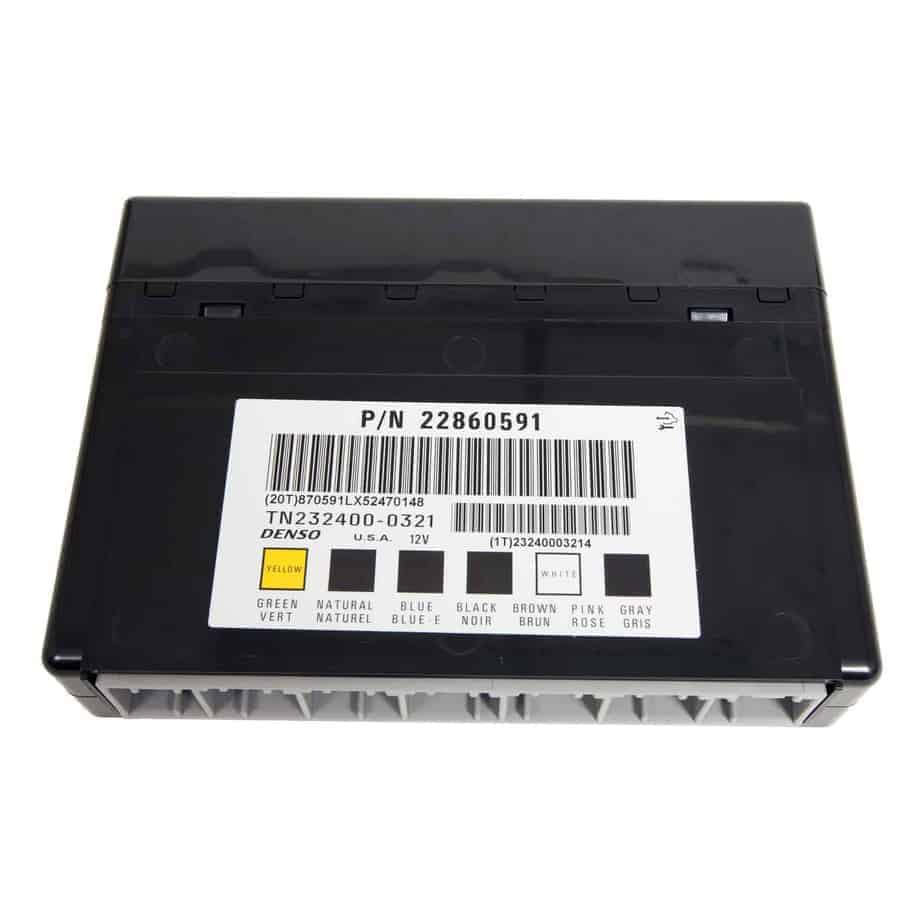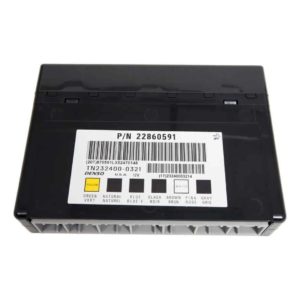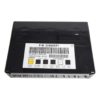Restore Control and End Electrical Frustrations
Are you dealing with bizarre electrical issues in your 2010 Chevrolet Avalanche 1500 or another GM vehicle? Flickering dash lights, power windows with a mind of their own, or a security system that randomly prevents you from starting your truck are classic signs of a failing Body Control Module (BCM). As the central command center for your vehicle’s body electronics, a faulty BCM can create a cascade of annoying and unpredictable problems. In my 20+ years of diagnostics, I’ve seen how a failing BCM can make a perfectly good vehicle feel unreliable.
This isn’t just a replacement part; it’s a complete, hassle-free solution. We take this genuine GM-spec Body Control Module and program it specifically to your vehicle’s VIN before it ships. This means it arrives at your door ready for installation, loaded with the latest GM software updates. You get to skip the expensive trip to the dealership for programming, saving you significant time and money. This is the smart, efficient way to get your vehicle’s features working correctly again.
Case Study: A Tricky Diagnosis
A customer brought in their 2010 Tahoe—a sister vehicle to the Avalanche—with a frustrating intermittent no-start condition. The security light was flashing, and the key fob worked only half the time. They had already replaced the battery and checked the ignition switch. After connecting my scan tool, I noticed communication errors with several accessory modules. The tell-tale sign was that these errors were inconsistent, pointing not to the individual components but to the central hub that controls them. We confirmed it was an internal failure in the BCM. By installing a pre-programmed 2010 Avalanche 1500 BCM (which shares the same architecture), we resolved all the issues in under an hour of shop time, saving the customer hundreds compared to a dealer visit.
Is Your Vehicle Showing These Symptoms?
- ✔ Intermittent or non-functional power windows, locks, or mirrors.
- ✔ Erratic interior or exterior lighting (flickering, staying on, or not turning on).
- ✔ A flashing security light on the dashboard and potential no-start conditions.
- ✔ The horn honking unexpectedly or the alarm system malfunctioning.
- ✔ Incorrect readings or warnings on the instrument cluster.
- ✔ Communication error codes (U-codes) stored when scanned.
A Straightforward Guide to BCM Installation
Installing your new BCM is manageable for a confident DIYer. For the 2010 Avalanche 1500, the BCM is typically located under the driver’s side of the dashboard, near the steering column.
- Safety First: Always disconnect the negative terminal from your vehicle’s battery and wait a few minutes before beginning.
- Locate the BCM: Remove the lower dash panel beneath the steering wheel to gain access. The BCM is a black plastic box with several large multi-pin electrical connectors.
- Disconnect and Remove: Carefully unplug all electrical connectors. They have locking tabs that need to be depressed. Once disconnected, unbolt or unclip the old module from its mounting bracket.
- Install the New Module: Mount your new, pre-programmed BCM in the same location. Securely reconnect all electrical connectors, ensuring they click into place.
- Reconnect Power: Re-install the dash panel and reconnect the negative battery terminal.
Important Post-Installation Procedures
After installing your new BCM, a few final steps are required to ensure all systems operate correctly. These procedures sync the new module with your vehicle’s other safety systems.
- Airbag System Reset: An airbag warning light is common after a BCM swap. A professional scan tool is needed to perform the ‘Setup SDM Primary Key in BCM’ function. This re-establishes the secure link between the BCM and the airbag module (SDM).
- Brake Pedal Position Sensor Relearn: Some vehicles require the Brake Pedal Position (BPP) sensor to be recalibrated. This ensures the brake lights and stability control system function as intended.
Verified Vehicle Compatibility
This Body Control Module is a direct replacement for a wide array of General Motors vehicles. While this listing is focused on the 2010 Avalanche 1500 BCM, it also fits many other models. Please verify your original part number against the list below or contact us with your VIN to confirm fitment. This module is compatible with part numbers: 10382479, 15093910, 15276271, 15299986, 15819552, 15828601, 15837419, 15872388, 15872421, 15880684, 15921352, 15921353, 15948438, 15948439, 20815898, 20839063, 20864767, 20864768, 20921435, 20921436, 20935349, 22860591, 25826124, 25826125, 25847588, 25847589, 25892622, 25910474, 25934762, 25934763, and 95151084.
Fits select models of:
- Chevrolet Avalanche, Tahoe, Suburban, Impala, Traverse, Express Van
- GMC Yukon, Yukon XL, Acadia, Savana Van
- Cadillac Escalade, CTS, DTS, SRX
- Buick Enclave, Lucerne
- And more from 2006-2013.
Frequently Asked Questions
What exactly does a Body Control Module do?
The BCM is a computer that manages the non-engine related functions in your vehicle. This includes power windows, power locks, the security system, interior and exterior lights, wipers, and other comfort and convenience features.
Why do you need my VIN to program the BCM?
Your Vehicle Identification Number (VIN) allows us to flash the module with the exact software and settings your vehicle was built with. This ensures all the options on your specific vehicle work correctly and that the BCM can communicate properly with the other computers, like the Engine Control Module (ECM).
Is this part difficult to install myself?
For most of the listed trucks and SUVs, the BCM is located under the dashboard and is accessible after removing a trim panel. The physical swap is straightforward, involving unplugging connectors and unbolting the module. However, post-installation procedures like an airbag system reset may require a professional-grade scan tool.
Will this fix my flashing security or anti-theft light?
In many cases, yes. The BCM is a core component of the GM Passlock/Passkey anti-theft system. A failing BCM is a very common cause of security light issues and no-start problems. Our VIN programming ensures the security data matches your vehicle.
What happens if I don’t perform the post-installation procedures?
If you skip the required relearn procedures, you will likely have a persistent airbag warning light on your dash, and the airbag system may not function correctly in an accident. Other systems, like stability control, could also be affected if the brake pedal sensor is not recalibrated.


